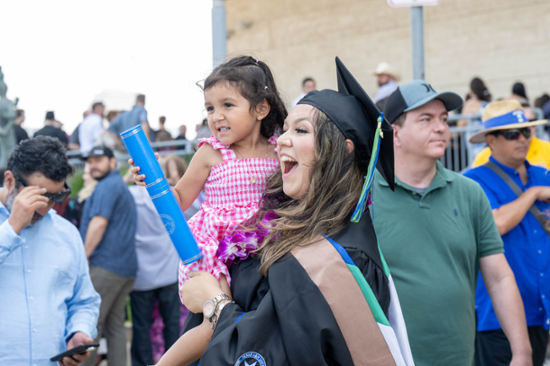‘INK’orporating History at TAMU-CC’s I-Create Lab
CORPUS CHRISTI, Texas – The I-Create Lab is one of the many places at Texas A&M University-Corpus Christi that draws out the best of student creativity. With 3D and large-scale printers; laser cutters; engravers; embroidery and sewing machines; and live audio and visual recording facilities, innovation knows no bounds in the studio located in the Mary and Jeff Bell Library.
But what if you are less tech-oriented and lean towards more traditional methods of production that perhaps have been overlooked in the constantly evolving technological landscape we now live in? I-Create still has the means to expand creative horizons.
“We have so many smiles when we come back here and show it off — the more you look at it, the more amazing and intricate it is.”
What David Jones, I-Create Coordinator, is referring to is a piece of literary history itself — a 1910 letterpress that is tucked away in one of the back rooms of the studios. The machine is interesting both for its antiquity and its functionality. Manufactured in Ohio by then-industry leaders, Chandler and Price, the press found its way to TAMU-CC with the intention of helping English students gain perspective on the life of English modernist author, Virginia Woolf, who, along with her husband Leonard, ran an independent press. Their machine, the “Hogarth Press,” cost 19 pounds (equivalent to approximately $2,000 U.S. dollars) upon its purchase in 1917, and in its 29-year career, published 527 titles. The TAMU-CC press is very similar to that which the couple used.
The size and weight of the press eventually led to the English department suggesting that I-Create take guardianship over the machine — an opportunity Jones jumped at. Then, as luck would have it, a TAMU-CC Master of Fine Arts student had undertaken an apprenticeship on the very same machine and taught Jones the fundamental skills of printing, which he is only too happy to pass on to students.
“We have had students create invitations and certificates with it; some art students design their own lithography to create prints,” Jones said. “We’ve also had some groups who design stamps out of Lego, which we then run through the printing press to create quirky designs.”
Jones is quick to reflect upon the myriad changes that the press has witnessed over the past 120 years, which is also reflected in changes to its original design, such as incorporating mechanisms to allow it to be powered by steam, and thus take on more industrial-scale jobs.
“When you think that this press was most likely operated by a child laborer for 12 hours a day, and now we use our 3D and CO2 laser printers to print the stamps for it to use, it’s pretty incredible to see printing technology that has developed so significantly during the span of a century,” he said. “It provides our students with unique insight into the past, while also benefiting from the latest technology — it’s a really cool juxtaposition.”
Grace Eton ’25, a graphic design major and student worker at I-Create, describes the lab’s guardianship of the printing press as “safekeeping history.”
“It’s fun to feel like Anne of Green Gables for a little while, and the graphic design students are always in awe of it,” she said. “I appreciate that we have this example of earlier technology, which we can still learn from in our type-setting classes and integrate into our work here.”
So how does one operate a printing press? The procedure involved significant multitasking such as spreading ink with a trowel, spinning a flywheel, and a lot of leg work — literally.
“Once you start pushing the pedal fast enough, the flywheel coordinates so that the rest of the process is straightforward; getting up to speed can be a bit of a workout, though,” Jones said. “Luckily for us, we can take shifts working the pedal and feeding paper into the machine, so our experience is much more relaxed than it would have been in the early days of the printer’s life.”
When asked about his vision for the future of the printing press, Jones is not only optimistic but very willing to share his expertise and knowledge with anyone interested in this fascinating piece of history.
“I do not doubt that the press will easily stand for another 120 years,” Jones said. “I invite everyone into the I-Create lab to try it out. It’s so unique, and one of our university’s hidden treasures!”














